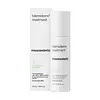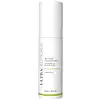What's inside
What's inside
 Key Ingredients
Key Ingredients

 Benefits
Benefits

 Concerns
Concerns

 Ingredients Side-by-side
Ingredients Side-by-side

Water
Skin ConditioningDipropylene Glycol
HumectantDisodium Azelate
Caprylic/Capric Triglyceride
MaskingPropanediol
SolventEthoxydiglycol
HumectantAlcohol Denat.
AntimicrobialPolyacrylate Crosspolymer-6
Emulsion StabilisingSalicylic Acid
MaskingMandelic Acid
AntimicrobialShikimic Acid
Skin ConditioningSphingomonas Ferment Extract
Skin ConditioningEpigallocatechin Gallate
AntioxidantBioflavonoids
Skin ConditioningSerenoa Serrulata Fruit Extract
Skin ConditioningPhosphatidylcholine
EmulsifyingCholesterol
EmollientIsostearyl Alcohol
EmollientRetinol
Skin ConditioningTocophersolan
Antioxidant1,2-Heptanediol
Skin ConditioningButylene Glycol
HumectantGlycerin
HumectantEthylhexylglycerin
Skin ConditioningArachidyl Alcohol
EmollientButylene Glycol Cocoate
EmulsifyingBehenyl Alcohol
EmollientArachidyl Glucoside
EmulsifyingXanthan Gum
EmulsifyingMannitol
HumectantEthylcellulose
Hectorite
AbsorbentHydroxyethylcellulose
Emulsion StabilisingPoloxamer 338
EmulsifyingPoloxamer 235
EmulsifyingPolysorbate 20
EmulsifyingDisodium EDTA
BHA
AntioxidantBHT
AntioxidantSodium Benzoate
MaskingPotassium Sorbate
PreservativePhenoxyethanol
PreservativeWater, Dipropylene Glycol, Disodium Azelate, Caprylic/Capric Triglyceride, Propanediol, Ethoxydiglycol, Alcohol Denat., Polyacrylate Crosspolymer-6, Salicylic Acid, Mandelic Acid, Shikimic Acid, Sphingomonas Ferment Extract, Epigallocatechin Gallate, Bioflavonoids, Serenoa Serrulata Fruit Extract, Phosphatidylcholine, Cholesterol, Isostearyl Alcohol, Retinol, Tocophersolan, 1,2-Heptanediol, Butylene Glycol, Glycerin, Ethylhexylglycerin, Arachidyl Alcohol, Butylene Glycol Cocoate, Behenyl Alcohol, Arachidyl Glucoside, Xanthan Gum, Mannitol, Ethylcellulose, Hectorite, Hydroxyethylcellulose, Poloxamer 338, Poloxamer 235, Polysorbate 20, Disodium EDTA, BHA, BHT, Sodium Benzoate, Potassium Sorbate, Phenoxyethanol
Water
Skin ConditioningPPG-15 Stearyl Ether
EmollientMandelic Acid
AntimicrobialGlycerin
HumectantArginine
MaskingNiacinamide
SmoothingTribehenin PEG-20 Esters
EmollientEthoxydiglycol
HumectantMethylpropanediol
SolventSalicylic Acid
MaskingCetearyl Alcohol
EmollientDisodium Lauriminodipropionate Tocopheryl Phosphates
CleansingDimethicone
EmollientSodium PCA
HumectantBisabolol
MaskingAllantoin
Skin ConditioningAloe Barbadensis Leaf Juice Powder
Skin ConditioningFusanus Spicatus Wood Oil
MaskingEucalyptus Globulus Leaf Oil
PerfumingEugenia Caryophyllus Bud Oil
MaskingBentonite
AbsorbentPolyacrylate Crosspolymer-6
Emulsion StabilisingXanthan Gum
EmulsifyingSilica
AbrasiveAcrylates/C10-30 Alkyl Acrylate Crosspolymer
Emulsion StabilisingPhenylpropanol
MaskingMaltodextrin
AbsorbentDisodium EDTA
Phenoxyethanol
PreservativeT-Butyl Alcohol
PerfumingCaprylyl Glycol
EmollientBenzoic Acid
MaskingDehydroacetic Acid
PreservativeFarnesol
PerfumingLimonene
PerfumingEugenol
PerfumingWater, PPG-15 Stearyl Ether, Mandelic Acid, Glycerin, Arginine, Niacinamide, Tribehenin PEG-20 Esters, Ethoxydiglycol, Methylpropanediol, Salicylic Acid, Cetearyl Alcohol, Disodium Lauriminodipropionate Tocopheryl Phosphates, Dimethicone, Sodium PCA, Bisabolol, Allantoin, Aloe Barbadensis Leaf Juice Powder, Fusanus Spicatus Wood Oil, Eucalyptus Globulus Leaf Oil, Eugenia Caryophyllus Bud Oil, Bentonite, Polyacrylate Crosspolymer-6, Xanthan Gum, Silica, Acrylates/C10-30 Alkyl Acrylate Crosspolymer, Phenylpropanol, Maltodextrin, Disodium EDTA, Phenoxyethanol, T-Butyl Alcohol, Caprylyl Glycol, Benzoic Acid, Dehydroacetic Acid, Farnesol, Limonene, Eugenol
Ingredients Explained
These ingredients are found in both products.
Ingredients higher up in an ingredient list are typically present in a larger amount.
Disodium EDTA plays a role in making products more stable by aiding other preservatives.
It is a chelating agent, meaning it neutralizes metal ions that may be found in a product.
Disodium EDTA is a salt of edetic acid and is found to be safe in cosmetic ingredients.
Learn more about Disodium EDTAEthoxydiglycol is a synthetic solvent.
Solvents are used to keep ingredients together in a product. They can help dissolve ingredients to stable bases or help evenly distribute ingredients throughout the product.
Ethoxydiglycol also helps deliver other key ingredients into the skin.
Learn more about EthoxydiglycolGlycerin is already naturally found in your skin. It helps moisturize and protect your skin.
A study from 2016 found glycerin to be more effective as a humectant than AHAs and hyaluronic acid.
As a humectant, it helps the skin stay hydrated by pulling moisture to your skin. The low molecular weight of glycerin allows it to pull moisture into the deeper layers of your skin.
Hydrated skin improves your skin barrier; Your skin barrier helps protect against irritants and bacteria.
Glycerin has also been found to have antimicrobial and antiviral properties. Due to these properties, glycerin is often used in wound and burn treatments.
In cosmetics, glycerin is usually derived from plants such as soybean or palm. However, it can also be sourced from animals, such as tallow or animal fat.
This ingredient is organic, colorless, odorless, and non-toxic.
Glycerin is the name for this ingredient in American English. British English uses Glycerol/Glycerine.
Learn more about GlycerinMandelic Acid is an alpha hydroxy acid (AHA).
Like other AHAs, it helps exfoliate the surface of the skin by breaking down the bonds that hold dead skin cells together. This helps reveal smoother and brighter skin underneath.
Mandelic acid helps with:
Due to it having a larger molecular size than glycolic acid, mandelic acid is able to penetrate the skin more slowly and evenly. This makes it gentler and less irritating, making it a great option for sensitive or beginner skin.
Despite being milder, mandelic acid is still an effective exfoliant that improves skin texture and tone over time.
What makes mandelic acid stand out from other AHAs? It has antibacterial and antioxidant properties.
These traits make it a great option for acne-prone or problem skin by reducing active breakouts and fading post-acne marks. Studies show that mandelic acid (especially when combined with salicylic acid) can significantly reduce pimples and hyperpigmentation while causing fewer side effects than stronger acids.
Mandelic acid is effective in concentrations of 5% and up with an ideal pH range of 3-4 for at-home use.
Like other AHAs, it’s important to wear sunscreen daily to protect your newly exfoliated skin.
However, unlike glycolic acid, mandelic acid is light-sensitive. Be sure your mandelic acid is packaged in opaque containers to ensure it stays stable and effective.
In short, mandelic acid is a gentle yet powerful AHA that exfoliates, brightens, and helps clarify skin while keeping irritation low. Its antibacterial action makes it especially beneficial for those with acne-prone, sensitive, or uneven skin, offering smoother, clearer, and more even-toned results over time.
Read more about some other popular AHA's here:
Learn more about Mandelic AcidPhenoxyethanol is a preservative that has germicide, antimicrobial, and aromatic properties. Studies show that phenoxyethanol can prevent microbial growth. By itself, it has a scent that is similar to that of a rose.
It's often used in formulations along with Caprylyl Glycol to preserve the shelf life of products.
Polyacrylate Crosspolymer-6 is a texture enhancer and pH adjuster.
It is be used to thicken water-based products and create a gel-texture with a velvet feel.
One manufacturer claims this ingredient to have a pH range of 2-8 and to be biodegradable.
Learn more about Polyacrylate Crosspolymer-6Salicylic Acid (also known as beta hydroxy acid or BHA) is a well-known ingredient for treating skin that struggles with acne and clogged pores. It exfoliates both the skin's surface and deep within the pores to help clear out buildup, control oil, and reduce inflammation.
Unlike AHAs (alpha hydroxy acids), salicylic acid is oil-soluble. This allows it to penetrate into pores which makes it especially effective for treating blackheads and preventing future breakouts.
Salicylic acid is also known for its soothing properties. It has a similar structure to aspirin and can calm inflamed or irritated skin, making it a good option for acne-prone skin that is also sensitive.
Concentrations of 0.5-2% are recognized by the U.S. FDA as an over-the-counter topical acne product.
It can cause irritation and/or dryness if one's skin already has a compromised moisture barrier, so it's best to focus on repairing that before introducing this ingredient into your routine.
While salicylic acid does not increase sun sensitivity, it’s still important to wear sunscreen daily to protect your skin.
If you are looking for the ingredient called BHA or Butylated Hydroxyanisole, click here.
Learn more about Salicylic AcidWater. It's the most common cosmetic ingredient of all. You'll usually see it at the top of ingredient lists, meaning that it makes up the largest part of the product.
So why is it so popular? Water most often acts as a solvent - this means that it helps dissolve other ingredients into the formulation.
You'll also recognize water as that liquid we all need to stay alive. If you see this, drink a glass of water. Stay hydrated!
Learn more about WaterXanthan gum is used as a stabilizer and thickener within cosmetic products. It helps give products a sticky, thick feeling - preventing them from being too runny.
On the technical side of things, xanthan gum is a polysaccharide - a combination consisting of multiple sugar molecules bonded together.
Xanthan gum is a pretty common and great ingredient. It is a natural, non-toxic, non-irritating ingredient that is also commonly used in food products.
Learn more about Xanthan Gum